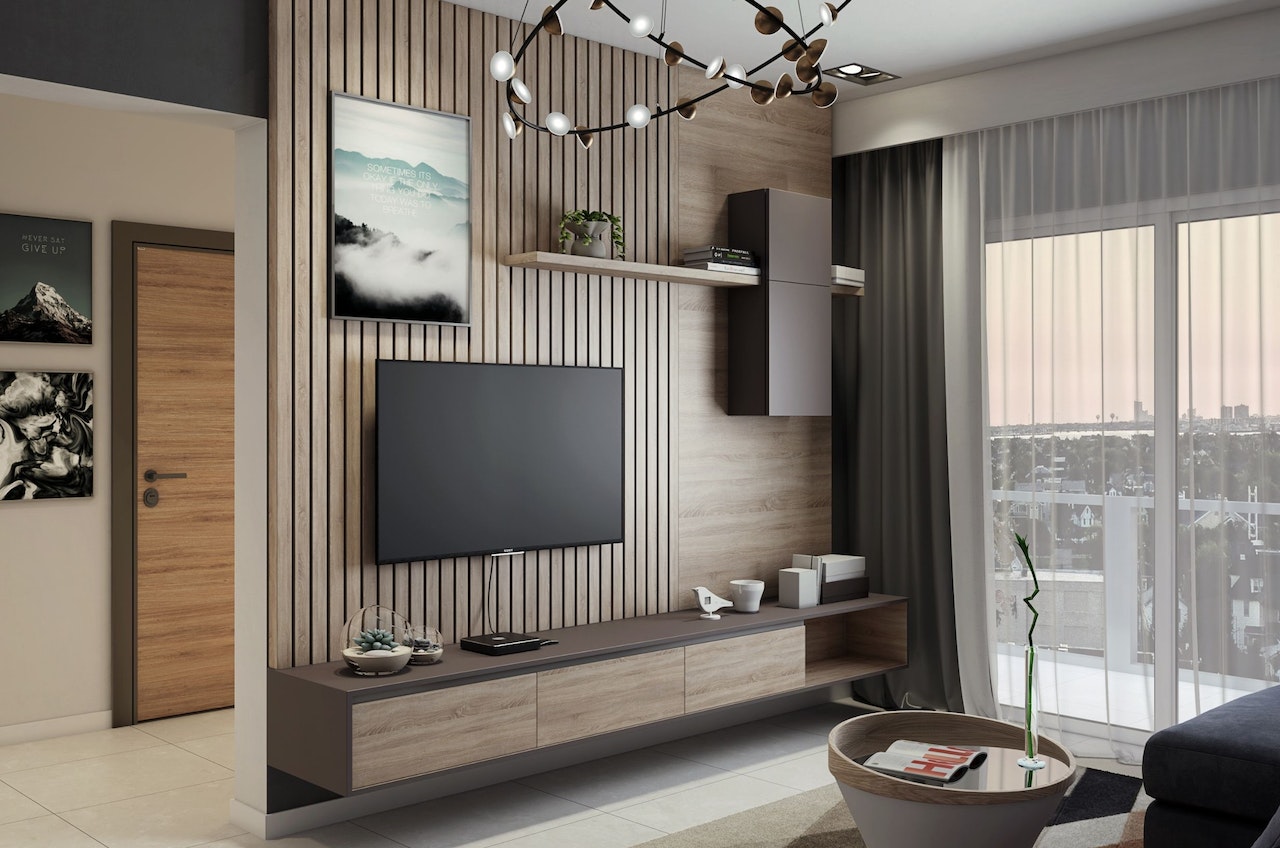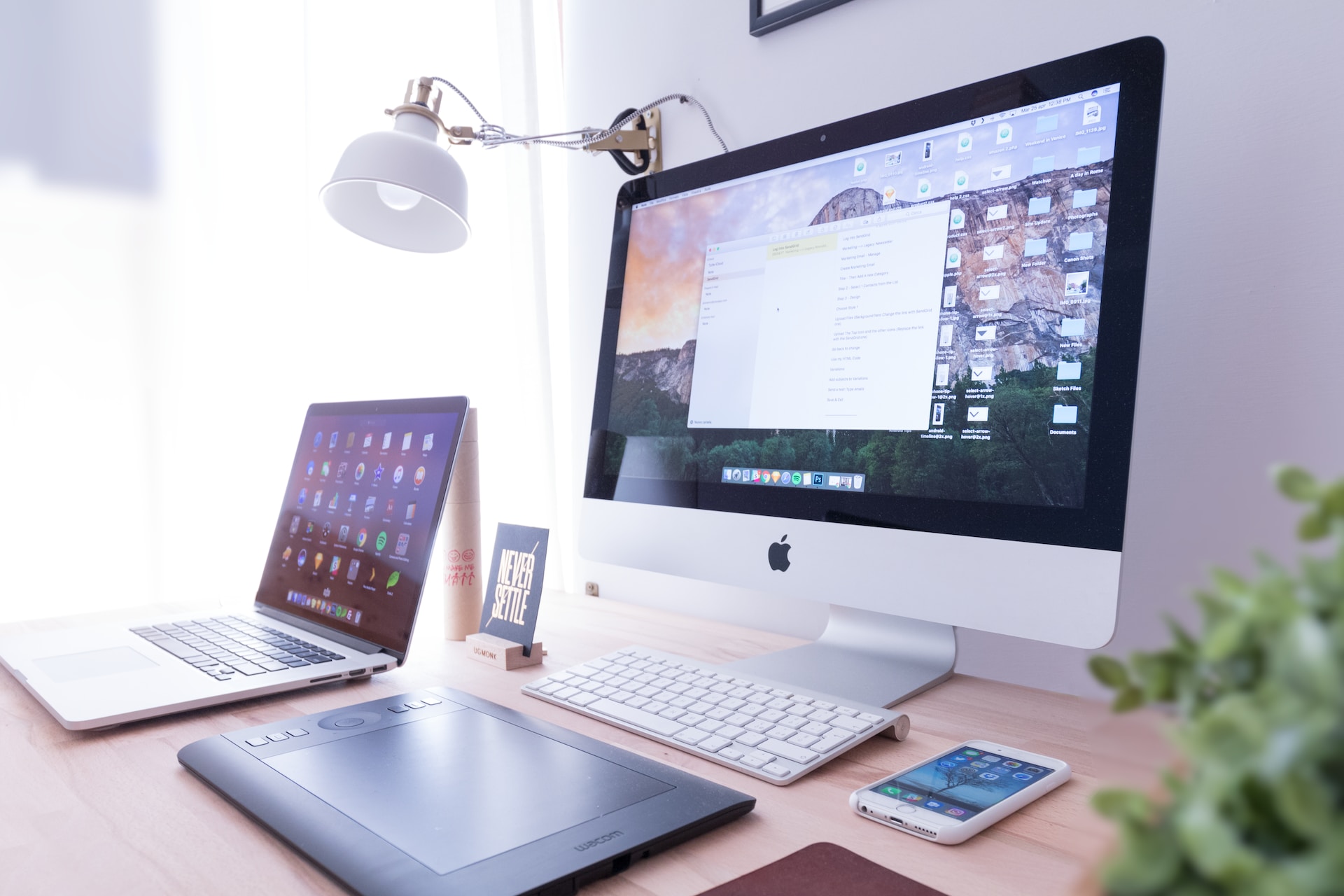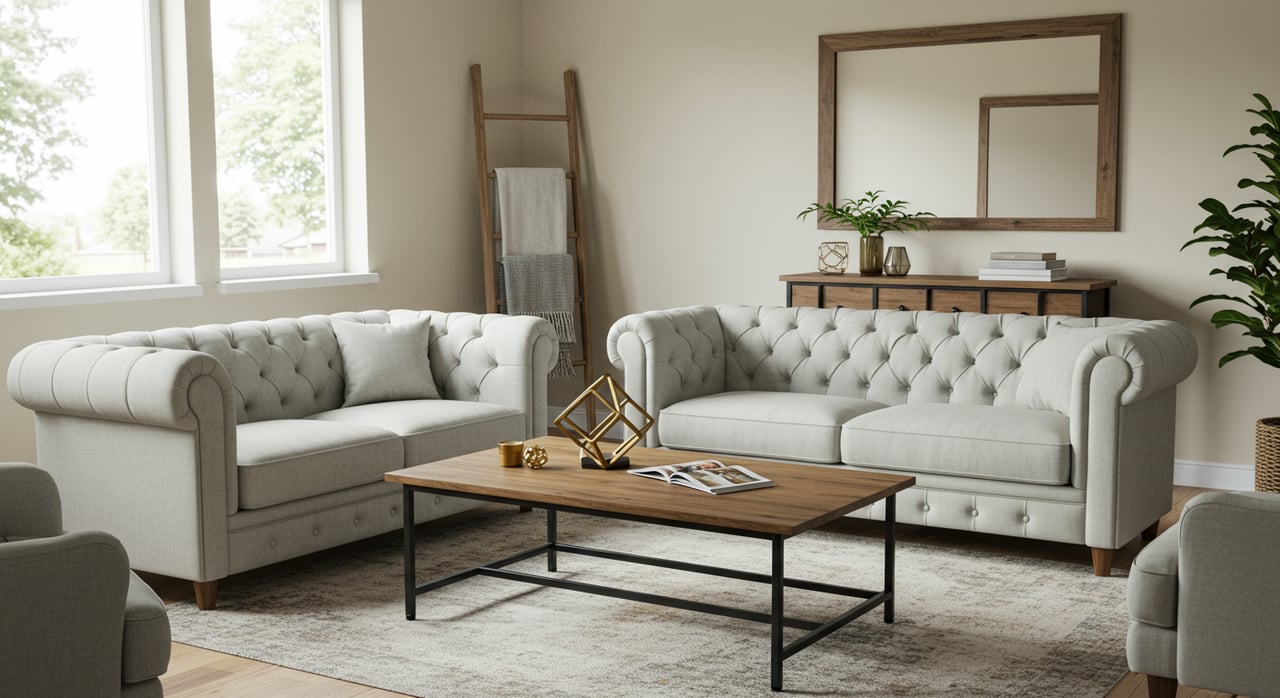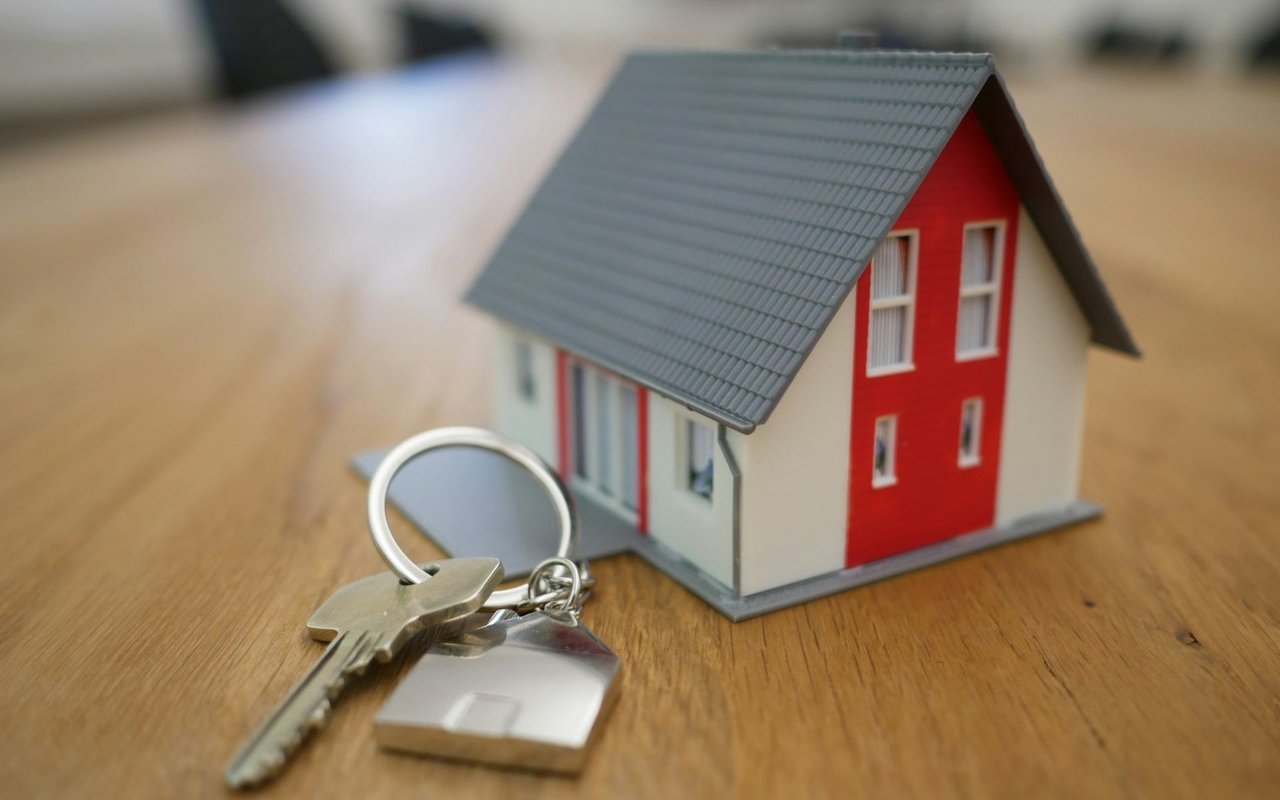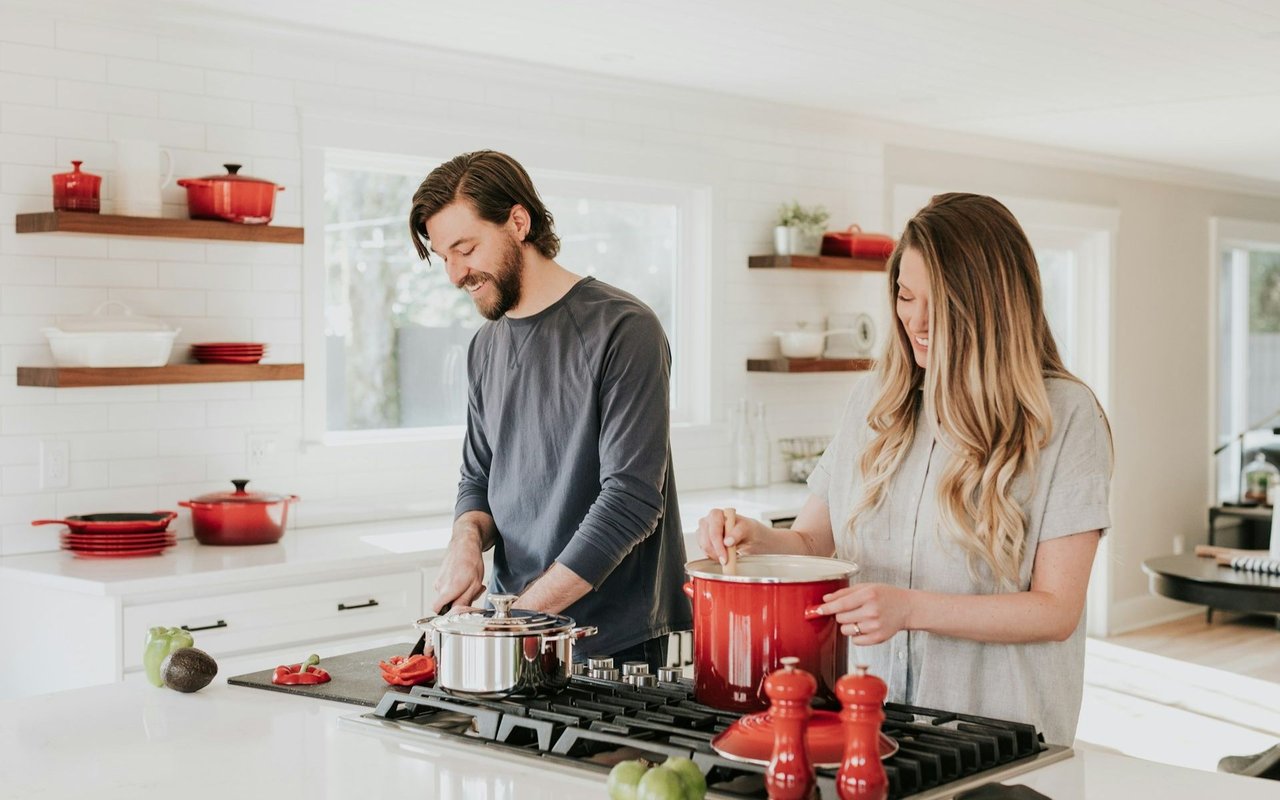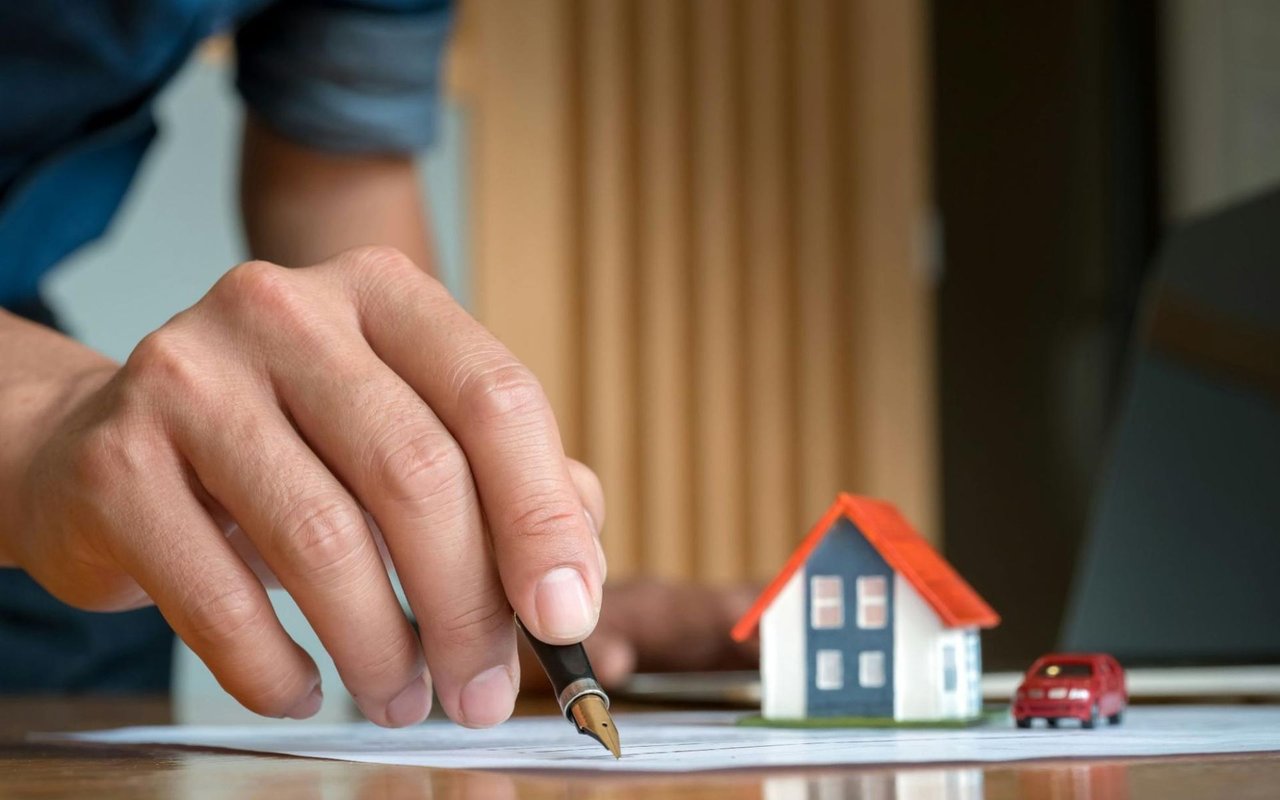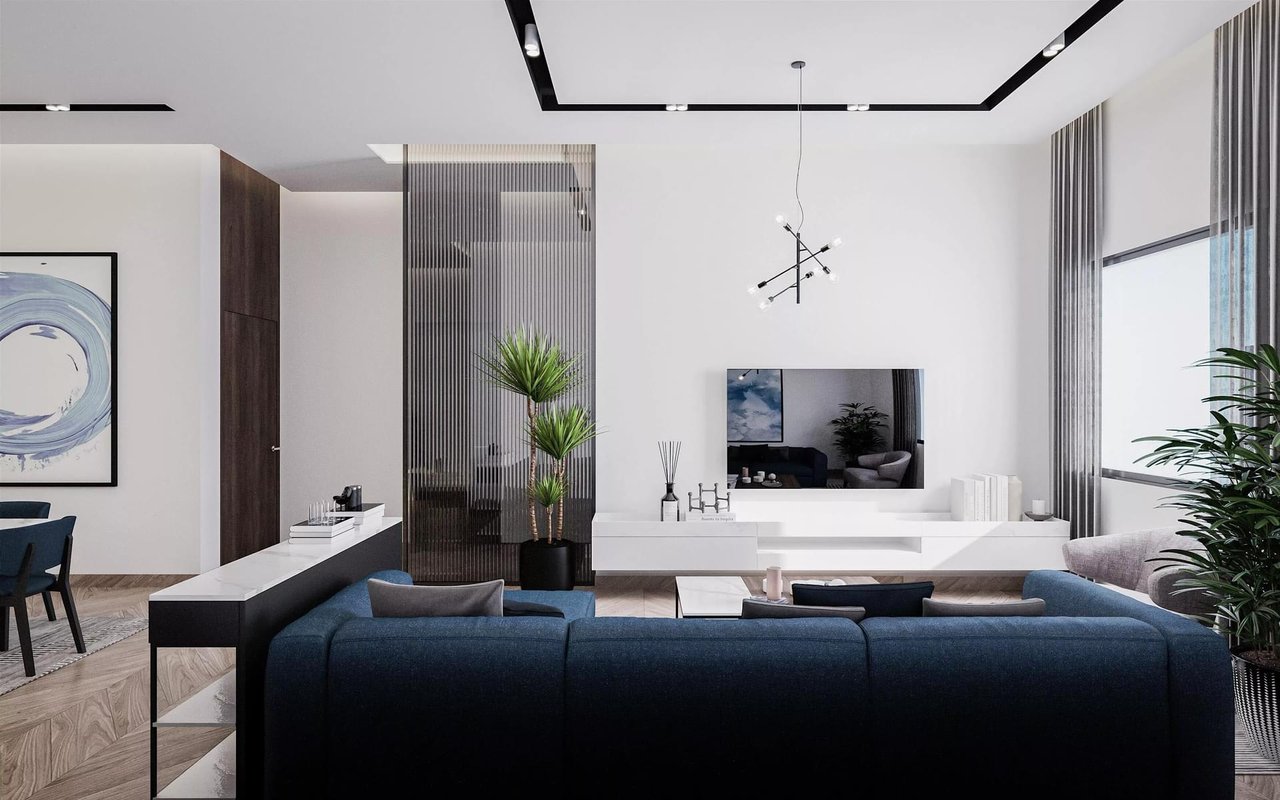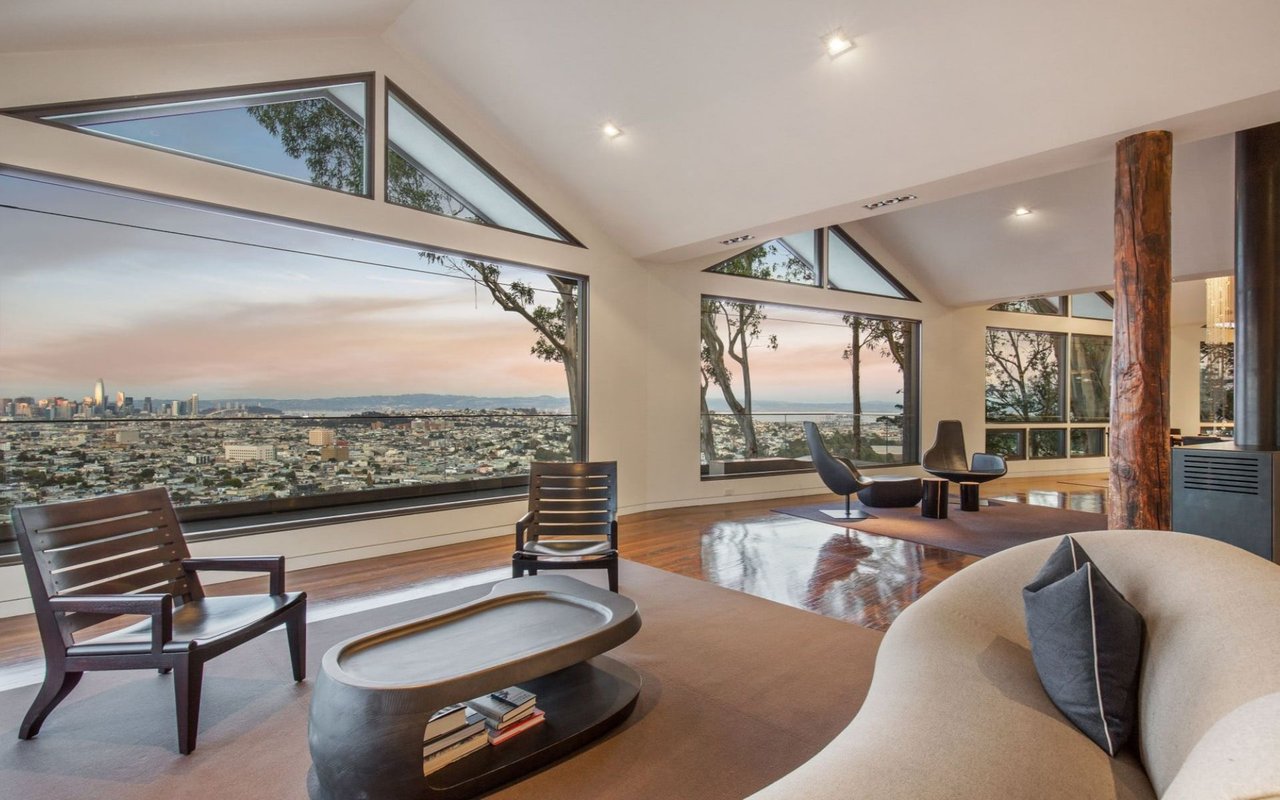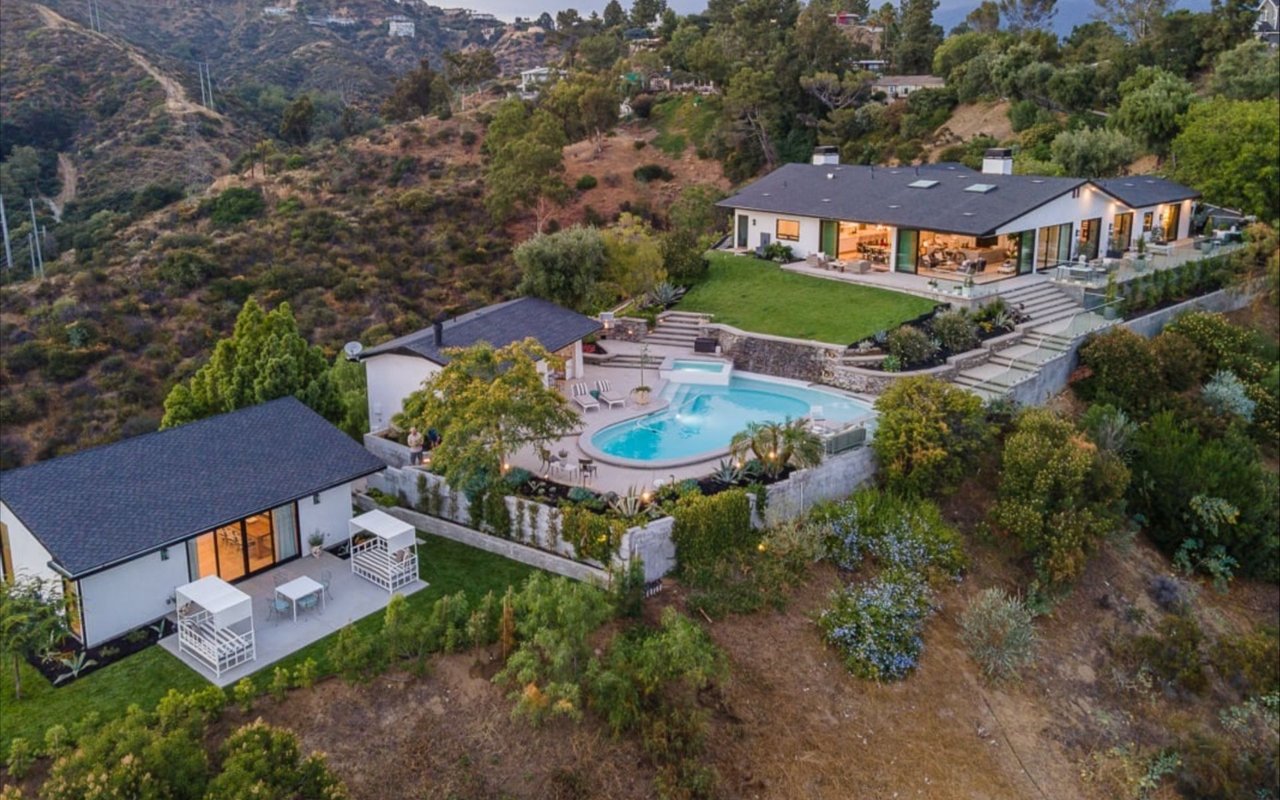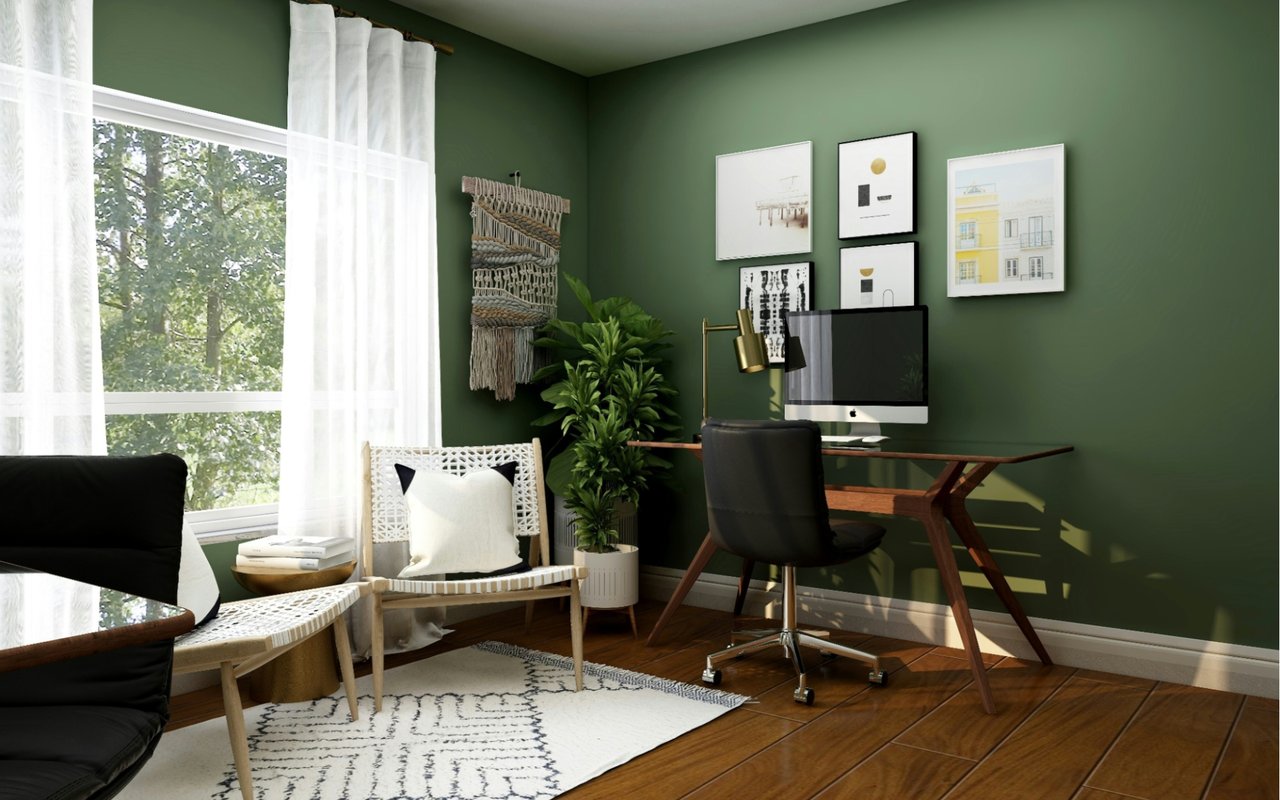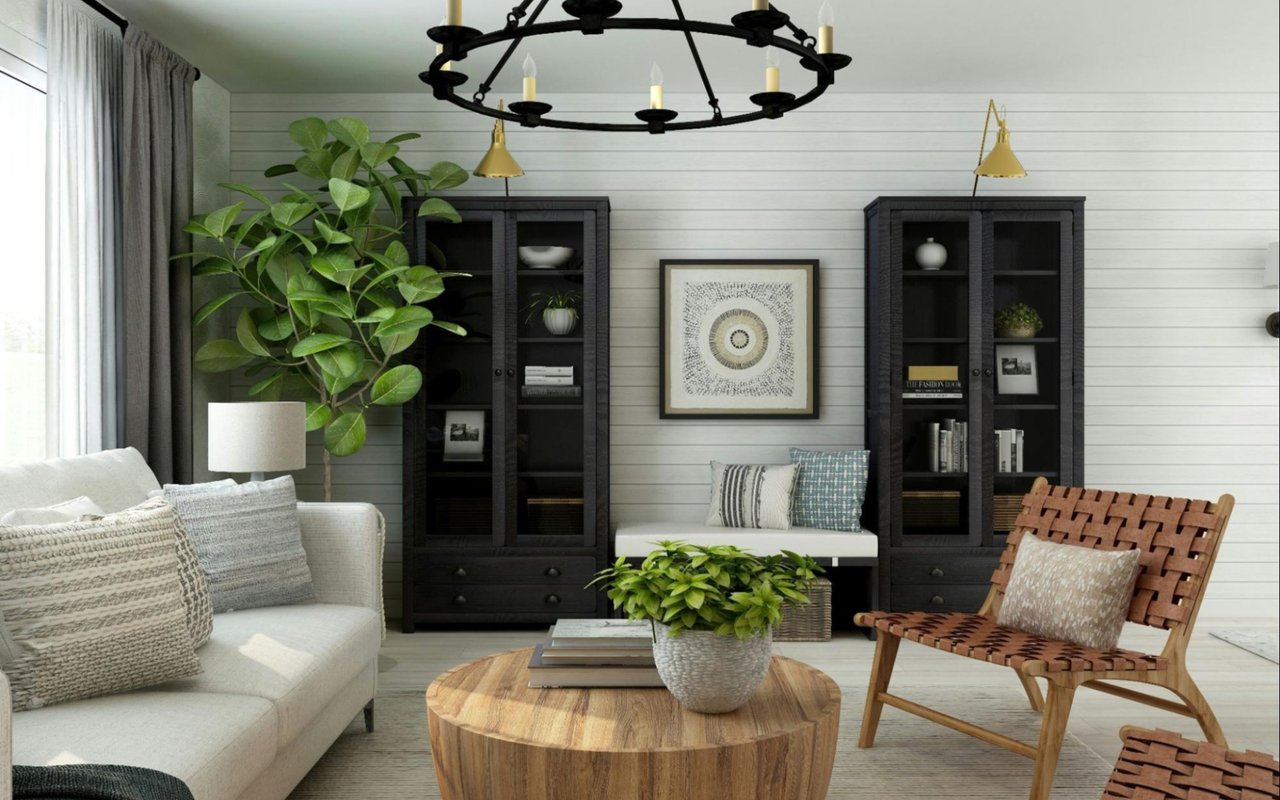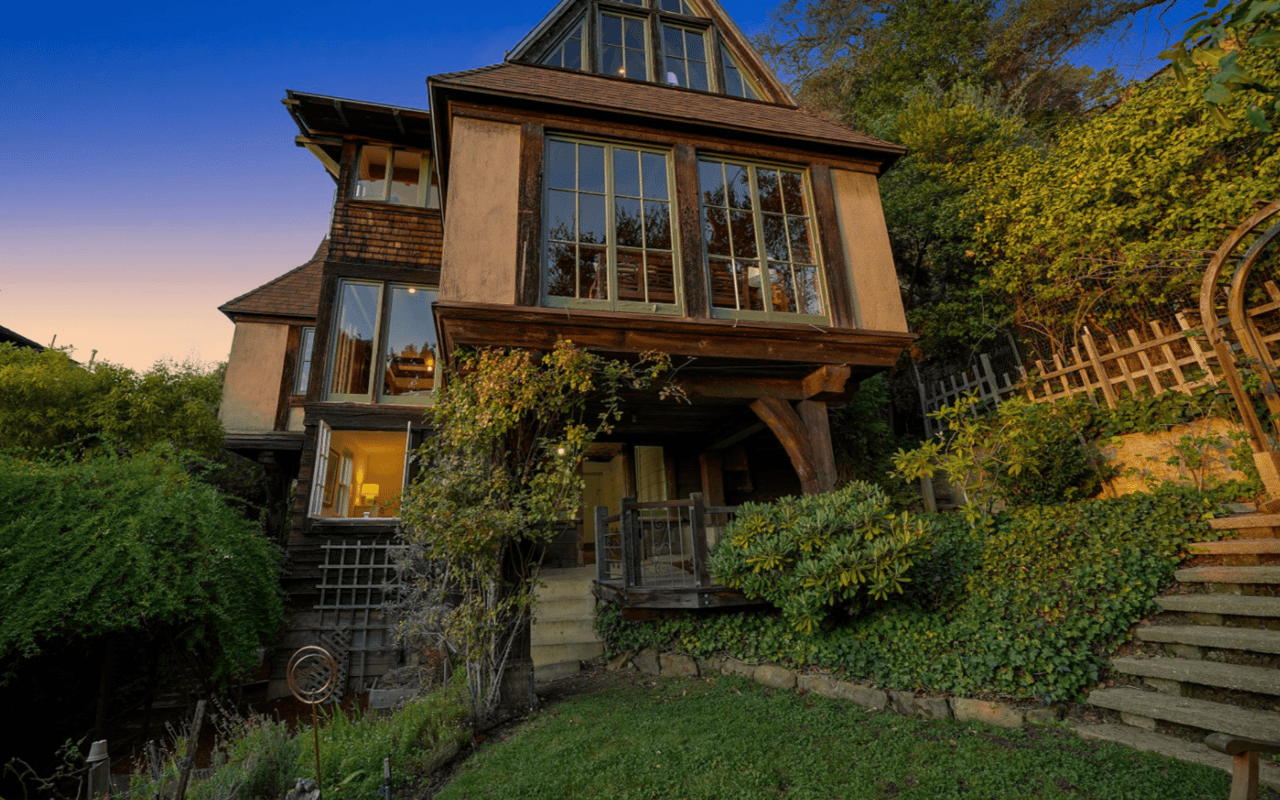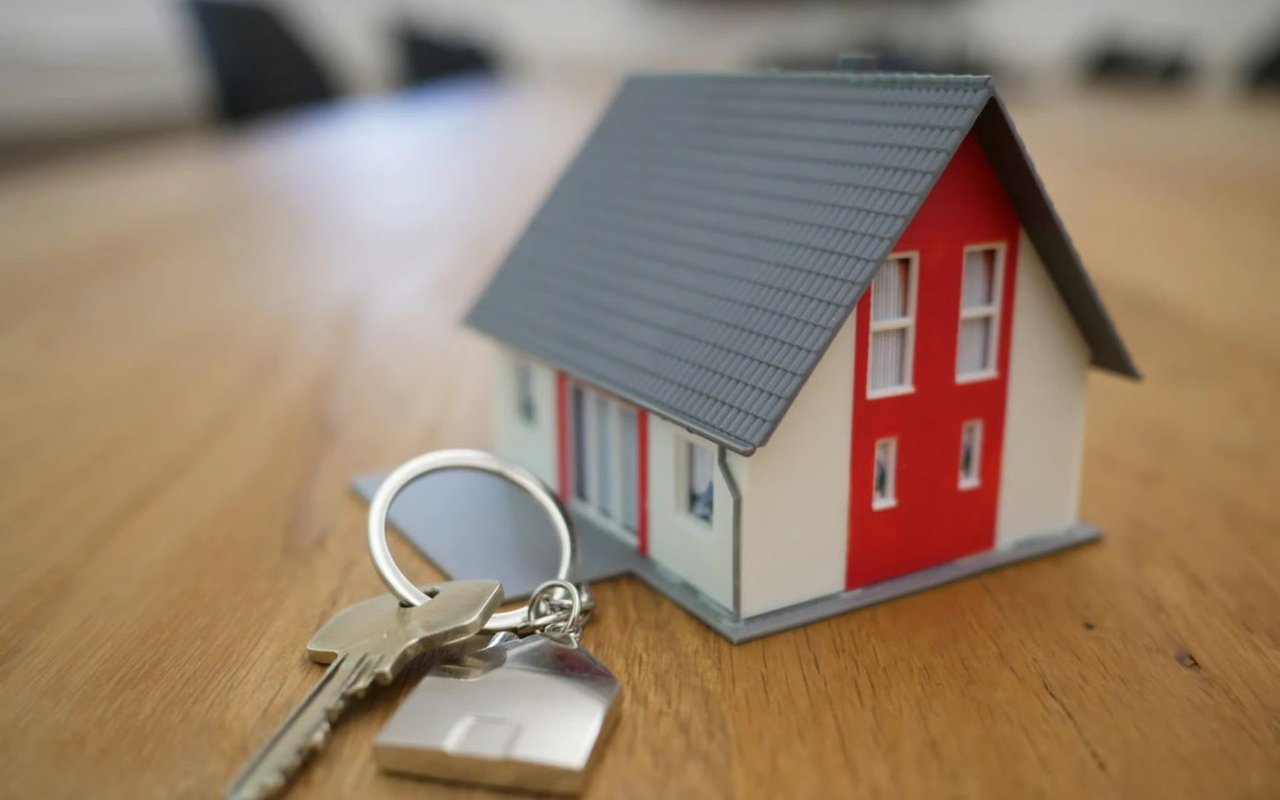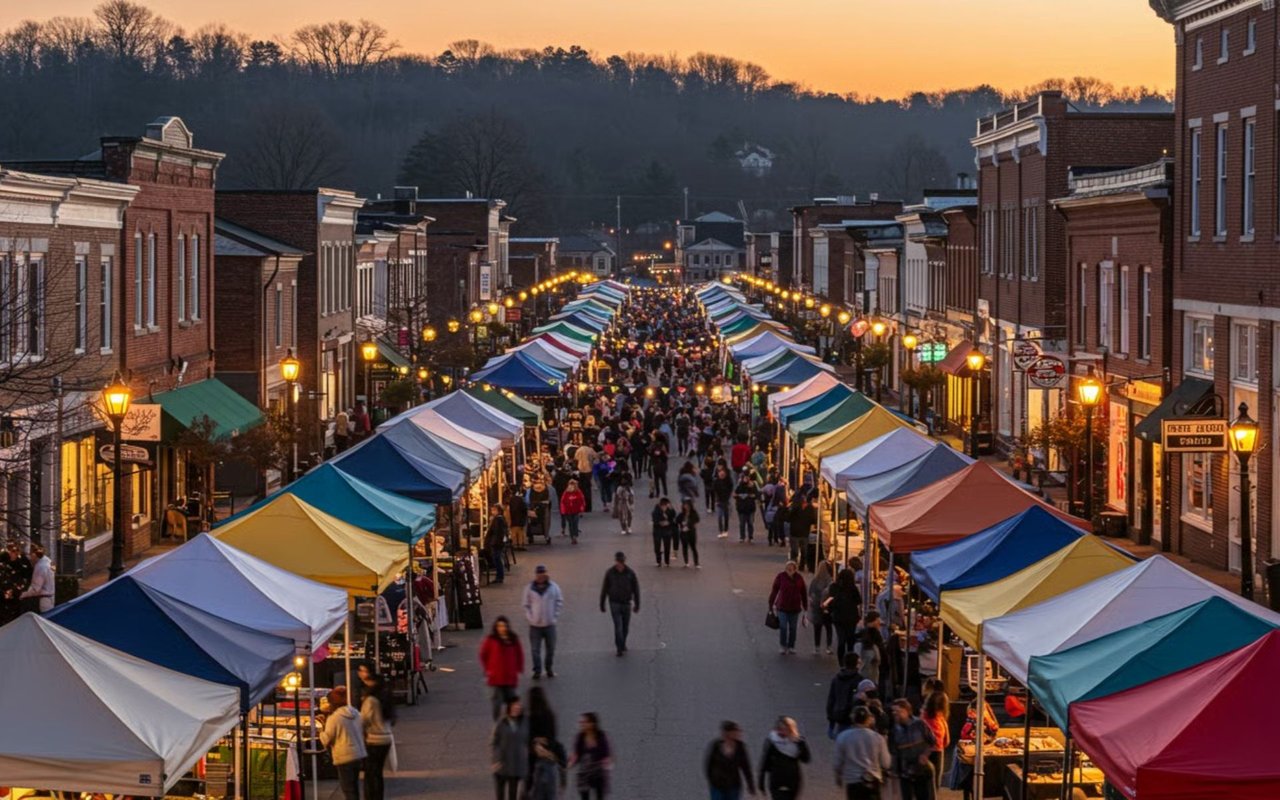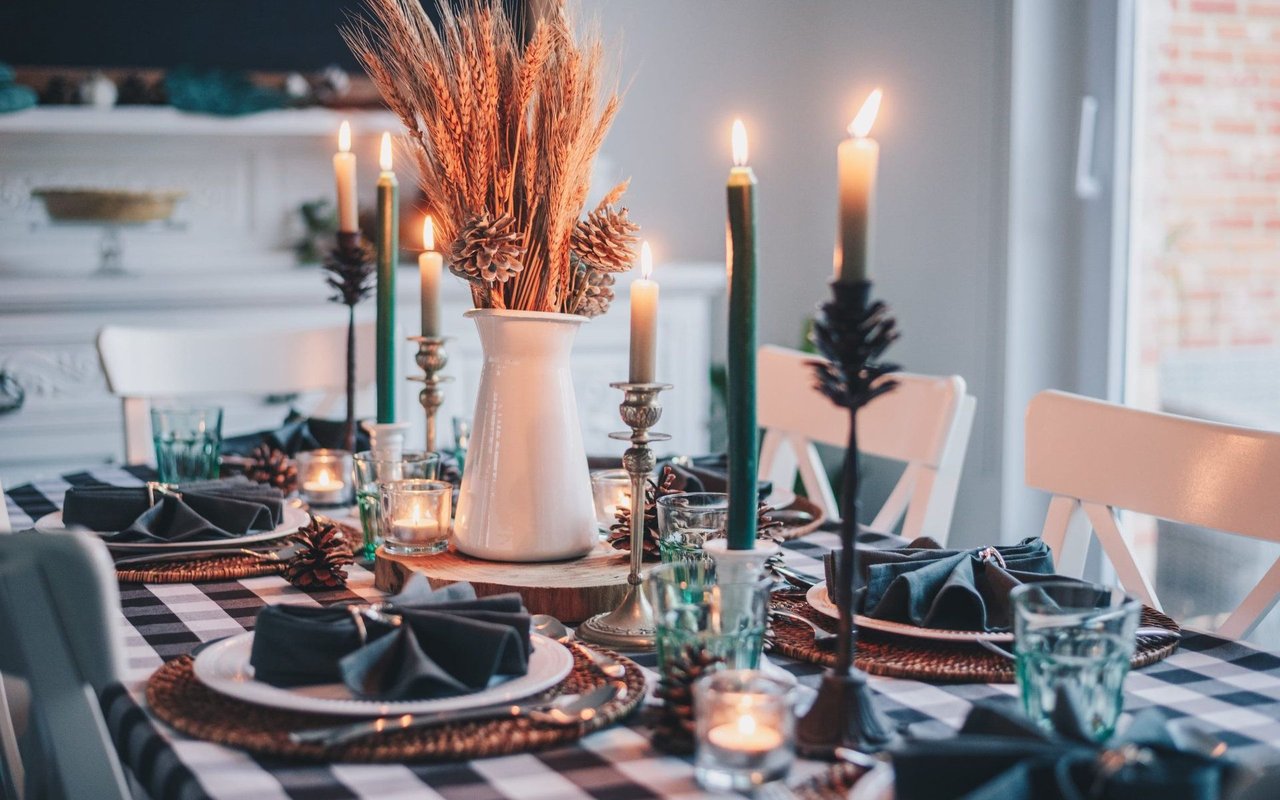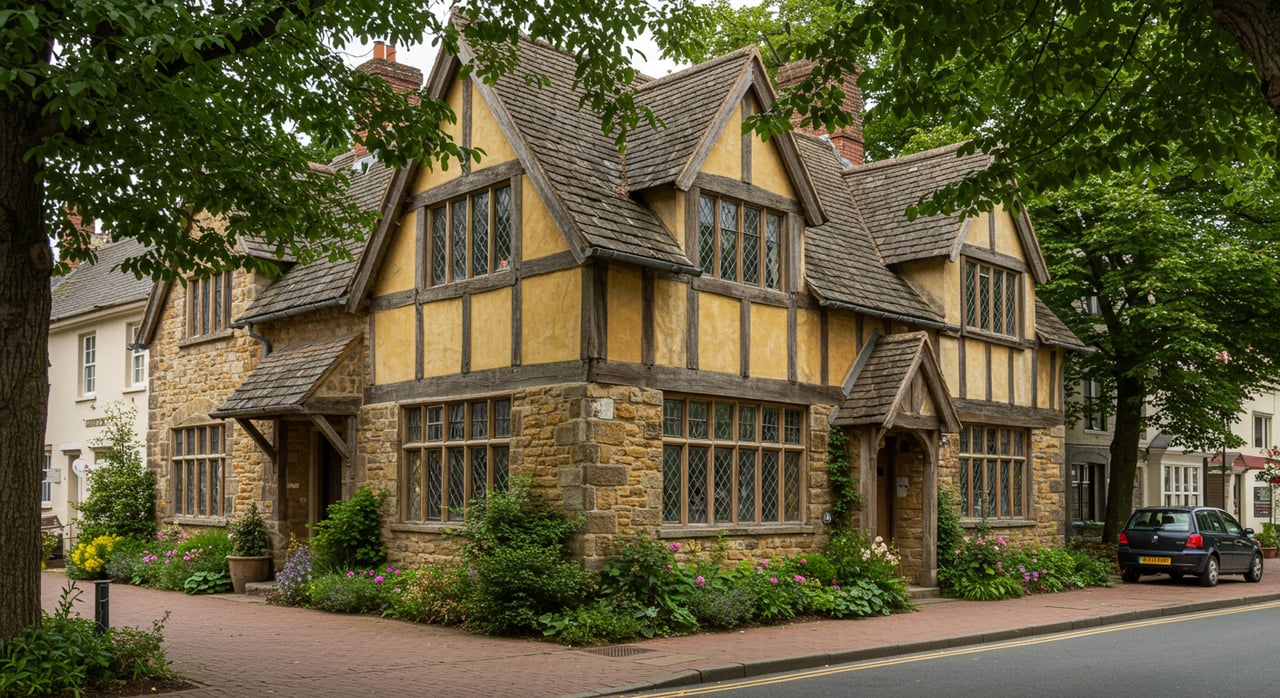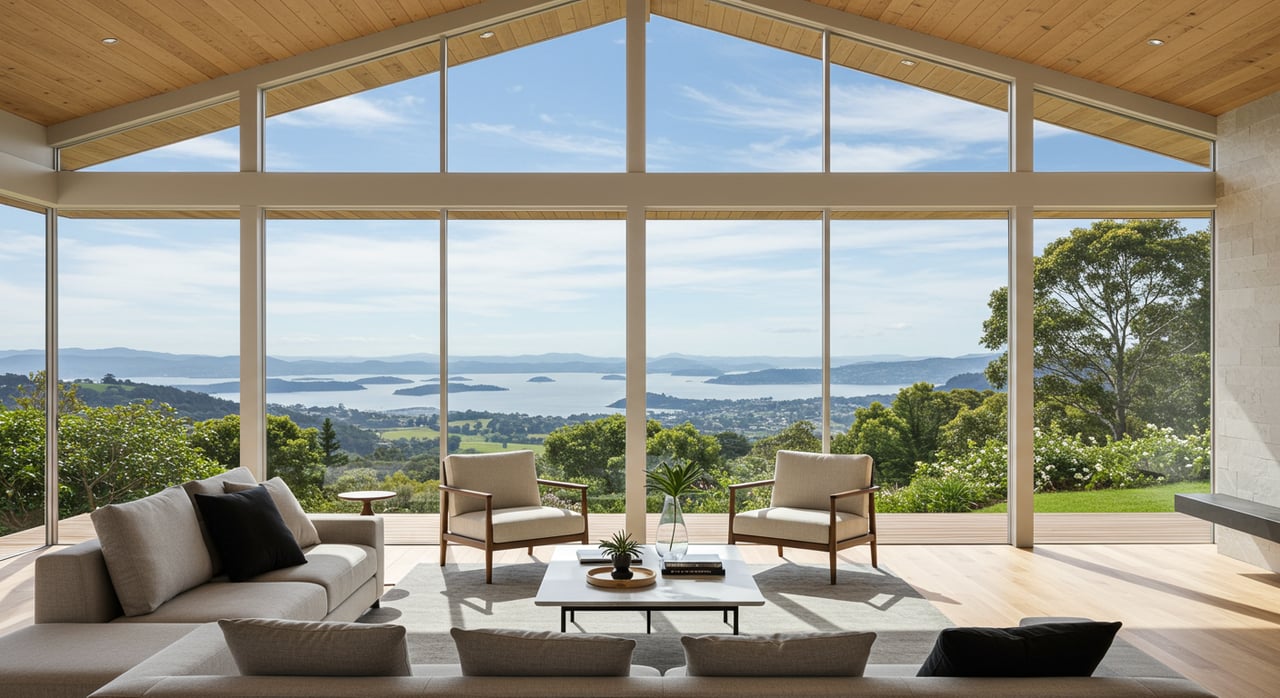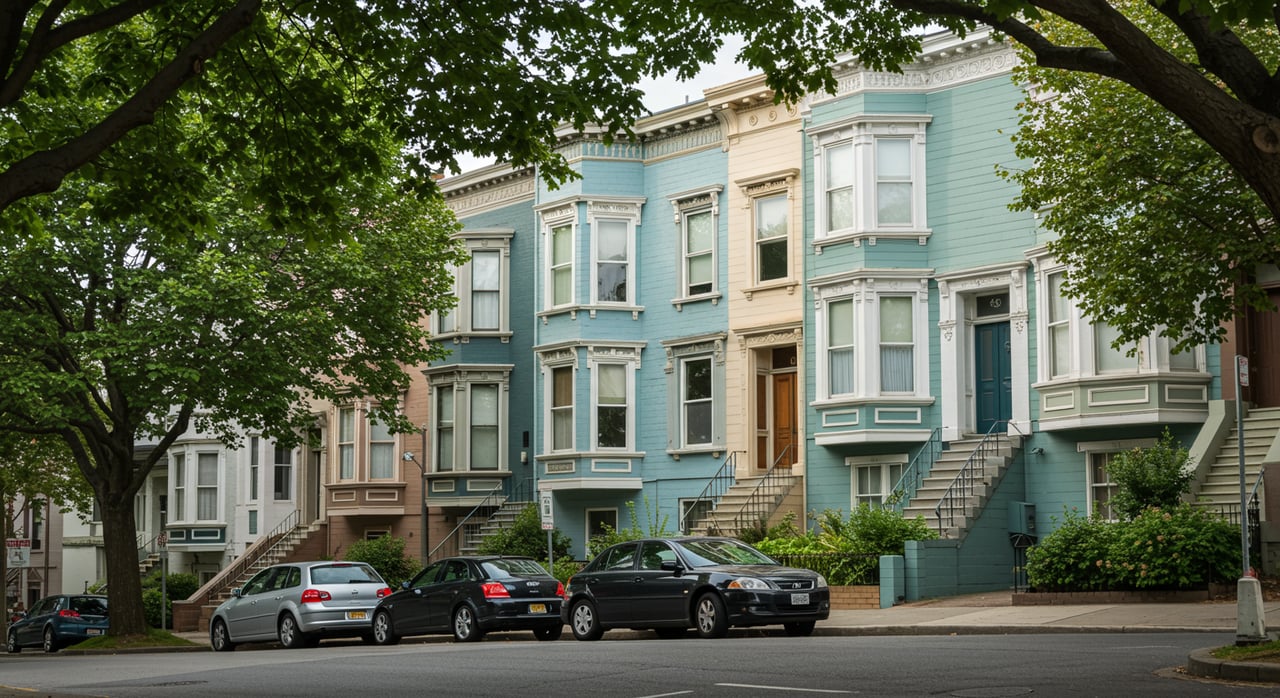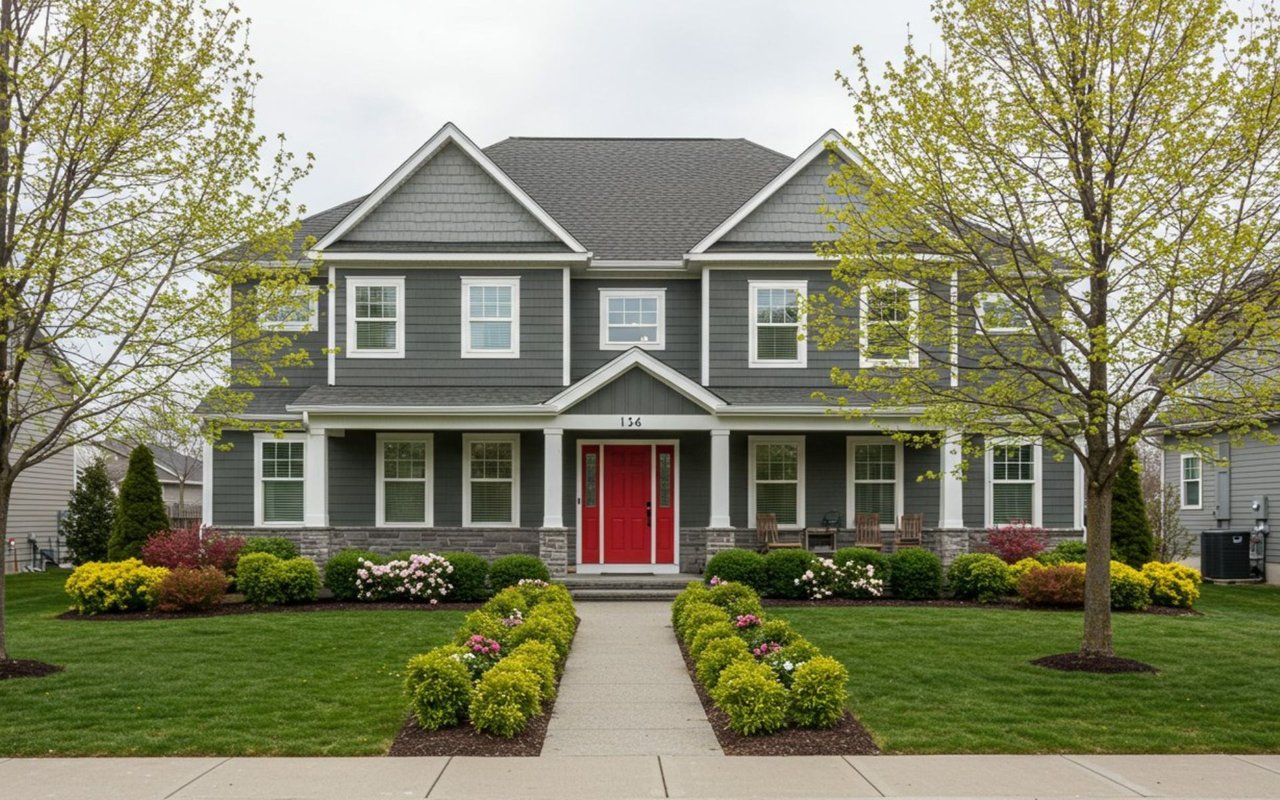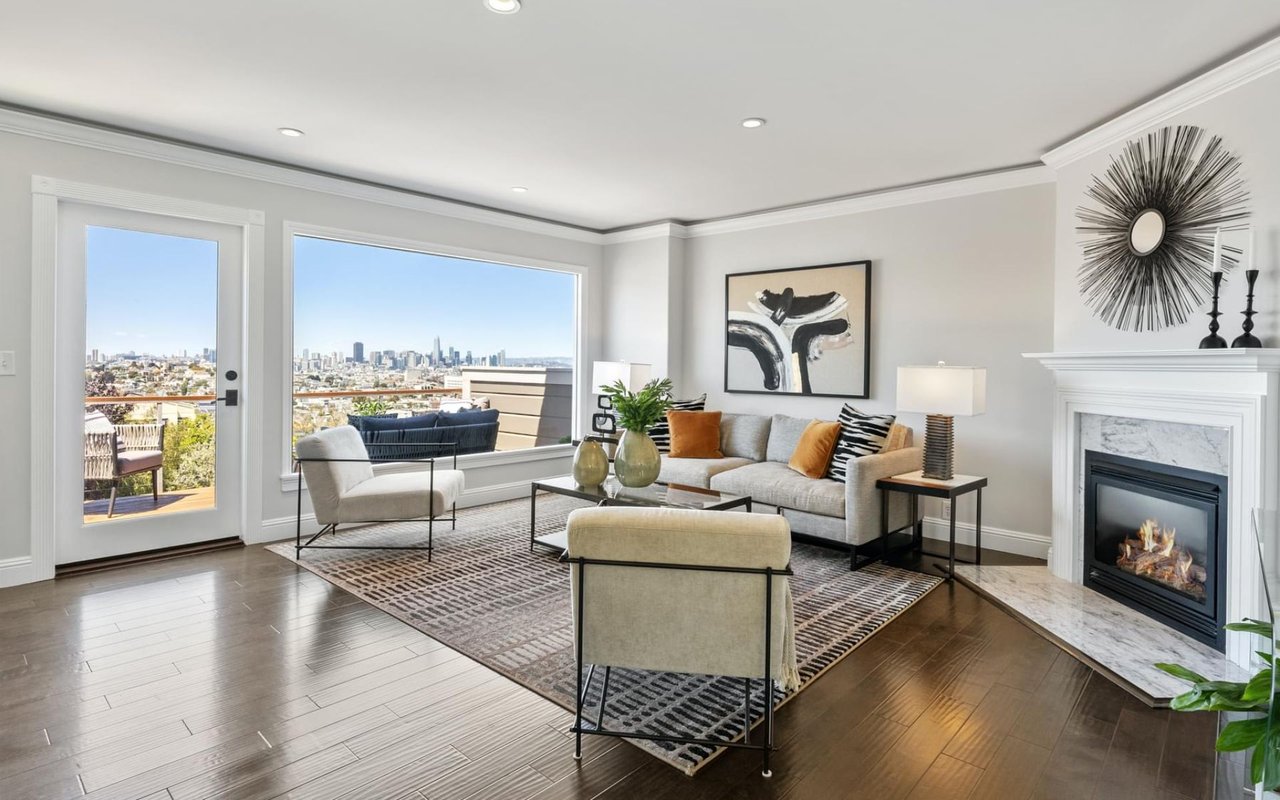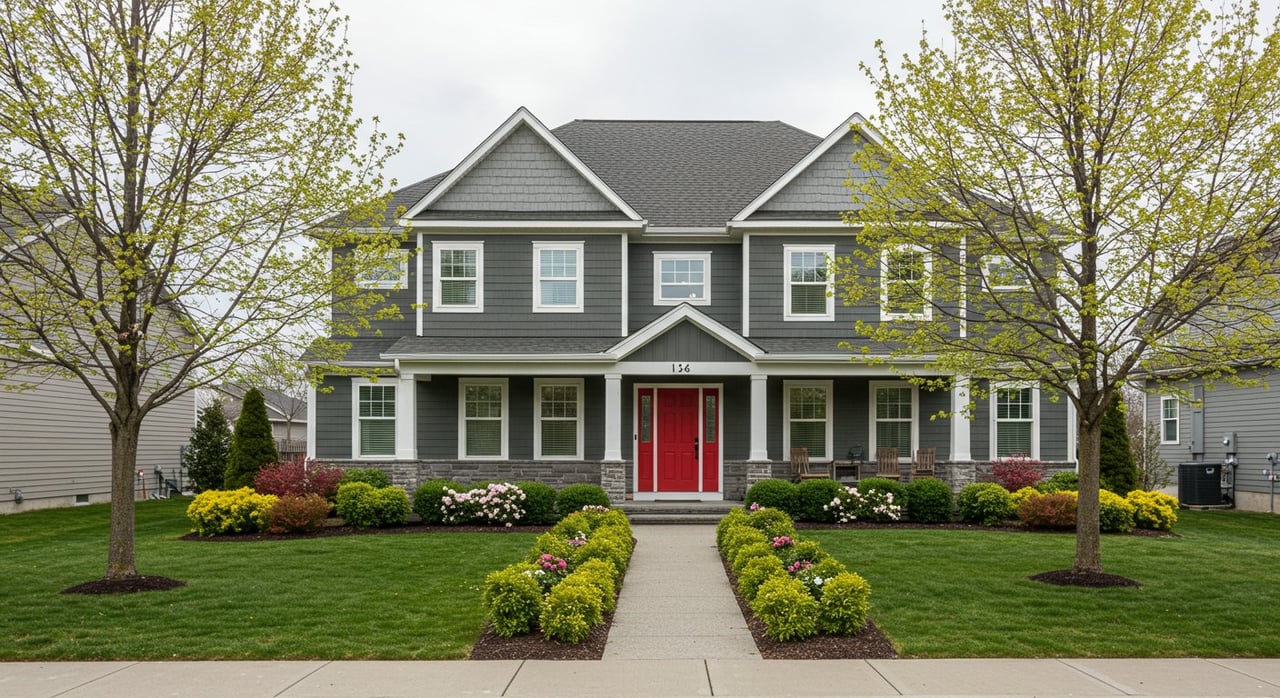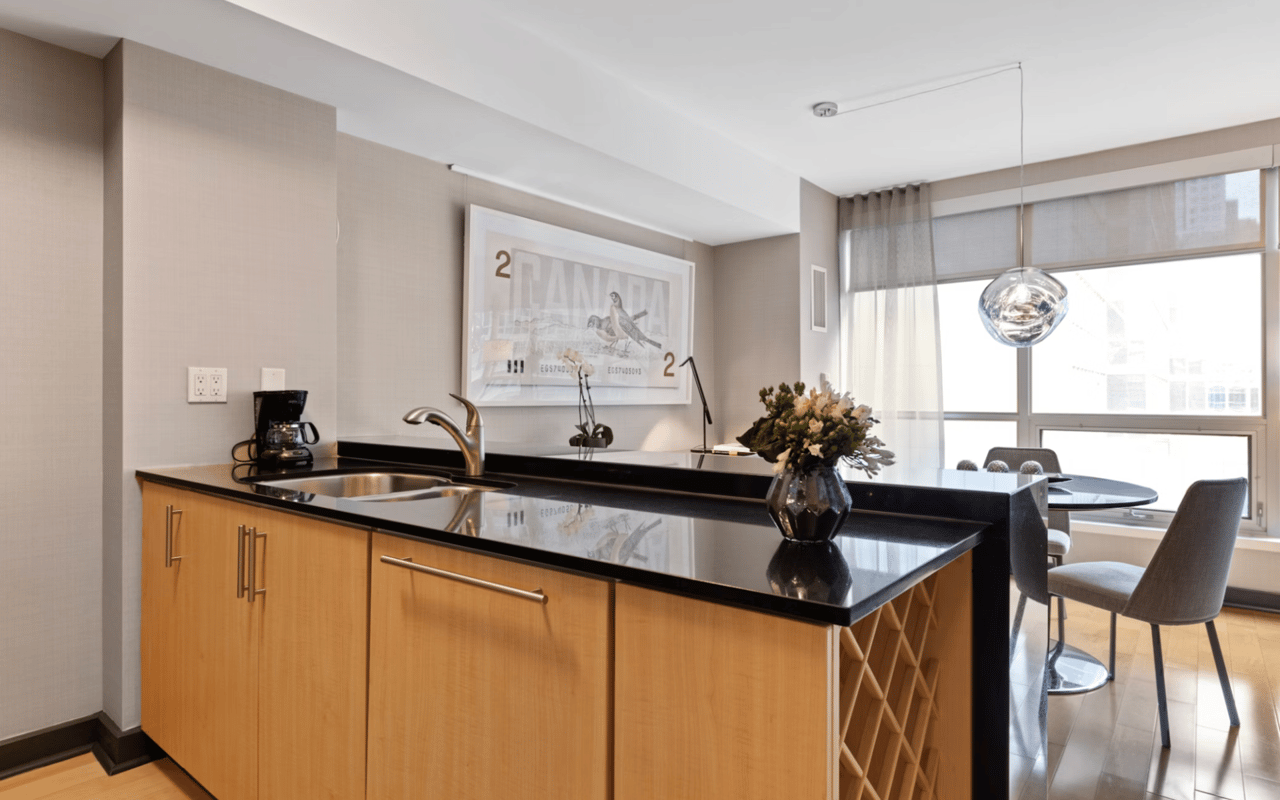Preparing your home for sale is a crucial step in the selling process, and it sets the stage for a successful transaction. Before listing your property online, it’s essential to address any necessary repairs and give your home a fresh, well-maintained appearance. By taking care of minor fixes, such as leaky faucets or chipped paint, you can present your home in its best light and attract potential buyers.
In addition to physical repairs, considering virtual staging can significantly enhance the appeal of your home online. Virtual staging allows you to digitally furnish and decorate your property, helping buyers visualize its full potential. By creating an inviting and visually appealing virtual environment, you can capture the attention of prospective buyers and make a lasting impression.
How to sell a house quickly
People often over-complicate what it takes to sell a house quickly. It’s just a function of the supply and demand for its style, location, condition, and asking price.
To sell fast, homeowners have the greatest control over the property condition and the asking price.
- Condition. Please make sure the home is in excellent condition without repairs, has new paint/carpet, lovely landscaping, updated appliances, a modern kitchen/bathrooms, and looks nicer and more appealing than the homes around it. The more a home stands out from others in the neighborhood, the faster it will sell if priced competitively.
- Price. The price of a home is the number one determining factor in how quickly it sells and is a sliding scale based on how nice the home is relative to others nearby and how many people are buying houses in the area. To sell quickly, homeowners should price their houses just below comparable homes of the same quality, size, and condition. If they do not want to do repairs, owners should understand they will need to price the home significantly below others in nicer condition to sell quickly.
Jeremy Brandt from We Buy Houses
What to do before selling a house
The pandemic has changed what buyers are looking for in a home. As a result, there are three projects homeowners should consider to increase the value of their homes:
- Adding more usable square footage is a priority for many buyers. Creating a home office space, creating an open floor plan, and finishing the basement or room over the garage can provide the additional space that buyers desire.
- Improving curb appeal is essential. This can be done by focusing on landscaping and adding small details like updating the mailbox or house numbers.
- Upgrading outdoor spaces such as a deck, fireplace, or outdoor kitchen has become more important due to the pandemic.
Having a functional outdoor space can make the home more appealing to buyers. If homeowners already have an outdoor oasis, simple repairs or pressure washing can enhance the house’s value. Understanding which projects to take on can help homeowners make thousands of dollars more when selling their homes.
Lauren Nelson from Matt O’Neill Real Estate
Staging small homes
Paint the interior walls with the color ‘Crisp Muslin’ and hire a staging company that specializes in using smaller furniture. Combine with smaller but colorful pillows, artwork, and knick-knacks to complete the presentation. Then hire a professional photographer who will get the lighting right and make the photos really pop online! You have to sell to the buyers twice – first online and then again in person and they are used to seeing staged homes on real estate TV shows.
Those who go all out with professional staging will be rewarded! Pro tip – home buyers look at the windows in photos and judge what they see outside the home. Be conscious of using photos that have a positive look through the windows!
Jim Klinge from Bubble Info
How to virtual stage a vacant home
Staging a home is critical if you are trying to get top dollar for your home. And it is important to have your home staged before you have a professional real estate photographer come to photograph your home.
Remember, decisions about whether a buyer wants to view your home are made online. And that decision can be made in a matter of seconds. You want to have your photos grab the home buyer’s attention. But what do you do with a vacant home? Each vacant room runs into another empty room. It is quite boring.
So how do you make your vacant home stand out? With Virtual Staging!!
Virtual staging is a technique where a vacant room is photographed and then digitally enhanced to add furniture and décor to a room. Thus, giving each room some much-needed visible appeal. Help the buyer get a vision for making the home theirs by staging your home virtually.
You can pick a style for the home, and the items are added carefully to each room you pick to have it virtually staged. Furniture, rugs, and artwork are all masterfully scaled to fit the room, and an online viewer won’t even know.
But it’s a good idea to let buyers know the photos have been virtually staged so they are satisfied when they arrive for their showing.
Virtual staging will drastically increase the appeal of a vacant home, which will help your home sell faster and for more money.
Kevin Vitali from Massachusetts REALTOR
Best home staging tip
Use staging to highlight the best features of the home. Focus your efforts on areas with the biggest impact, main living spaces, primary suite, kitchen, and outdoor living. Keep the house’s overall style (mid-century, modern, traditional, craftsman, etc.) in mind when selecting furniture and artwork. If staging isn’t possible, consider a virtual staging company to enchase the listing photos. Remember that most home buyers will see the house first online, so having the best professional photos of an elegantly staged home is key.
Meghan Barry, President of Who’s Who in Luxury Real Estate
Strategies to help maximize your profit when selling a home in today’s real estate market
Even with a housing shortage across the U.S., today’s buyers are getting their mojo back as more inventory becomes available. Some of the competition shrinks back, waiting for interest rates to go down (pro tip: don’t wait!). With this mojo comes the time to decide and an opportunity to be more selective. Here in beautiful Portland, Oregon, the “dialed” homes are going pending the first weekend, often with multiple offers. When we at Working Magic Group help sellers get ready to come to market, here’s the typical punch list we help our clients check off:
- Clear the clutter: clean countertops, knick-knacks, and any visual or highly personal distractions. If you last wore it a year ago, donate it. Order a pizza, turn on some tunes, and purge!
- Freshen up with paint: a go-to for walls is Sugar Dust by Miller Paint (PacNW). A full interior paint job by a professional on a 2,000-square-foot house should be about $5,000, including trim.
- Update hardware and fixtures: online resources have many options that can be affordable. Drawer pulls, light fixtures (bathroom, hallway, main bedrooms), faucets, and bathroom mirrors are usual suspects. On average, we freshen a home’s hardware with budgets of $500 – $1,000
- Curb appeal: Power wash! Lay down mulch, have color with plants – set the tone to be welcoming, cared for, and fresh. On average, our sellers invest $8,000 into listing prep, which, when we’re done, nets them on average 8% above asking. Solid return! Reach out to learn more about how to Work Magic yourself.
Gabrielle Enfield, founder of Working Magic Group at Living Room Realty
Save money when selling your home
There are ways of selling your home without causing financial strain. Cost-saving strategies can be implemented to reduce expenses and increase savings and profit. Below are four practical strategies that can assist in saving money when selling your home.
- Conduct a Pre-Listing Inspection: You should hire a professional inspector before listing your home. This will help you identify potential issues in advance and address them at a lower cost than being forced to negotiate with the seller and potentially reduce your sale price.
- Opt for Affordable Improvements: Instead of embarking on major renovations, focus on budget-friendly improvements that enhance your home’s appeal. For example, paint the walls, upgrade fixtures, and perform minor repairs to save on labor costs.
- DIY Photography: Instead of hiring a professional photographer, take high-quality photos yourself. Use natural light, declutter the rooms, and capture the best angles to showcase your home’s features. Online tutorials can guide you on how to take appealing real estate photos.
- Consider Limited Service or Flat-Fee Listing: Explore limited-service listing options or flat-fee MLS services. These alternatives allow you to pay a fixed fee or select specific services, reducing overall commission costs associated with a full-service agent.
By implementing these money-saving strategies, you can reduce expenses without compromising the quality of your home sale. Remember to prioritize cost-effectiveness and research options and make informed decisions throughout the selling process.
Earl Cox, co-founder of Ask The Money Coach
How to know if virtual staging is right for you?
Virtual staging refers to digitally enhancing or furnishing a vacant or empty property to make it more visually appealing and inviting for potential buyers or renters. It involves using computer-generated images or 3D rendering techniques to add furniture, decor, and other elements to the rooms of a property, giving prospective buyers or tenants a better sense of its potential and helping them visualize how the space could be used.
Virtual staging is used in real estate for online listings and marketing materials. By showcasing a staged and fully furnished space, virtual staging can create a more engaging and attractive presentation, attracting a larger audience and increasing the chances of generating interest and inquiries.
Compared to traditional physical staging, virtual staging offers several advantages. It is more cost-effective since purchasing or renting physical furniture and accessories is unnecessary. It also provides greater flexibility, as virtual staging allows easy customization and experimentation with different styles and layouts. Additionally, virtual staging can help potential buyers or renters envision the possibilities of an empty space and provide a sense of scale and proportion.
It’s important to note that virtual staging aims to present an accurate representation of the property. Still, it should be accurate and representative of the actual condition and features of the space. Clear disclosure should be made to ensure that potential buyers or renters understand that the furnishings and decorations are not physically present in the property.
Matt Harrison from Curb Appeal Photography
Declutter your home before selling
Decluttering a house is a critical aspect of selling your home that should not be taken lightly. You only have one chance at making a first impression. If curb appeal is the first impression of the exterior of your home, then staging is the first impression of the interior of your home. One of the most important aspects of staging your house is making sure it is decluttered. Nothing is worse for a homebuyer than seeing a house filled with someone else’s junk. Even if your home isn’t filled with “junk,” it can still be unappealing if there’s too much expensive furniture or electronics, making that interior feel cramped. A more minimalistic feel and an open canvas will allow buyers to imagine themselves and their possessions in the space.
There are some very easy and quick ways to start decluttering your home before it hits the market, especially before photographs are taken. Because this can be overwhelming, start small and do it in intervals. Start with 30 minutes at a time. Make piles or divide up some things you don’t use often. You can then put them in boxes and a storage unit. Takedown and remove as many personal items as possible, including photos of you and your family. Last but not least, ask for help from your friends and family!
Danny Margagliano from Realty Reads
How and why depersonalize a home before selling?
When preparing to sell a home, depersonalization plays a crucial role in maximizing its appeal to potential buyers. Depersonalization involves removing personal items and distinct characteristics that reflect the current homeowner’s taste and lifestyle. By creating a blank canvas, prospective buyers can envision themselves living in the space, increasing their emotional connection to the property. To achieve this, it is advisable to remove family photos, personal memorabilia, and unique decorative items. If your home has vibrant wall colors, neutralize the color scheme with a fresh coat of paint in neutral tones to allow buyers to project their style onto the space. Ultimately, depersonalizing a home enhances its marketability and increases the likelihood of attracting interested buyers as they can focus on the home’s features and potential rather than being distracted by the current occupant’s personal belongings.
Matiah Fischer, Realtor & Founder AllHomesLasVegas.com
Why is it worth the investment in home staging?
Home staging prepares a home to look its best before listing, here are some reasons why it is worth the investment.
Firstly, home staging creates an emotional connection between buyers and a property. A professional staging design allows buyers to walk through a show-ready home with defined, functional spaces. Added accessories and decor bring the details of the home to life, helping buyers envision themselves living in the space– ultimately leading to a faster and more successful sale.
Secondly, staging can increase the perceived value of a property. A professionally staged home appears well-maintained, modern, and stylish, justifying a higher asking price. This attracts more qualified buyers willing to pay a premium for a move-in ready home while also allowing sellers to get a return on their home staging investment through a higher sale price.
Lastly, staged homes sell faster. They stand out from the competition, catching the attention of the widest range of buyers. By highlighting unique details and telling a story through staging, the listing becomes more appealing in a crowded market. With faster sale time and higher offers, the investment of home staging is cheaper than a possible price reduction of a non-staged home receiving little to no buyer traffic.
In conclusion, becoming a home staging believer is worth the investment. It creates an emotional connection, increases perceived value, and leads to faster sales. Home staging maximizes the selling potential of a property and gives a competitive edge in this moving real estate market.
Melany Gonzalez from Showhomes Home Staging
Choosing the right real estate website and agent
Choosing the right real estate website and agent is crucial in ensuring a successful and efficient buying or selling process. A reliable website and agent can provide accurate and up-to-date information, offer professional guidance, negotiate deals, and ultimately help you make informed decisions about one of the most significant financial transactions of your life.
Creating an online listing that captivates potential buyers is a crucial aspect of selling your home online. By incorporating
high-quality photos and videos, along with a compelling property description, you can effectively showcase the unique features and allure of your property.
How to prepare and share your listing
Every potential real estate buyer wants to know as much as possible about the property they plan to purchase before sealing the deal. That means that your listing needs to have all the information that prospects need. Sometimes, it is not possible to include every necessary detail in your listing description. That is why photos and a walk-through virtual tour of the property on sale are paramount because it allows the prospect to focus on what they are interested in learning more about visually.
Professional photos will make a big difference. Consumers expect them. With the vast majority of all buyers looking at a property online before deciding whether or not to book a showing, it’s important that your home’s photographs stand out from the crowd, and including a high-quality virtual tour will do just that.
According to a report by the National Association of Realtors (NAR), 98% of prospects frequently search the Internet for homes on sale, and 46% of them indicate that they find virtual tours useful when searching for the property they eventually purchase. As such, investing in virtual tours is a wise idea if you want to sell your listing faster. Doing so will not only strengthen your relationship with prospects, but you will also increase the chances of selling your listing faster. If you need more information on tips for selling your listing fast, contact us today
Jim Osgood from True View 360
How to write a great listing description
- Start with the basic details: bed, bath, square footage, and any other relevant information, such as the lot size, year built, and location.
- Highlight the unique features and upgrades of the home, such as hardwood floors, a fireplace, a gourmet kitchen, or a backyard pool. Be sure to mention any recent renovations or updates that have been made to the home.
- Avoid listing the price of the home in the description. Instead, encourage potential buyers to click through to find out the price. This can increase engagement and lead to more inquiries.
- Describe the home as if the reader is walking through it. Start with the foyer and provide details about the ceiling height, the lighting, and any visible artwork or decor. Move on to the other rooms, highlighting their unique features, such as a bay window in the living room or a skylight in the master bedroom.
- Help the reader envision what it might be like to live in the home by providing small details that can help them emotionally connect to the space. For example, you might mention the sound of the birds outside the bedroom window or the smell of freshly baked cookies coming from the kitchen. These tiny details can make a big impact in helping buyers see themselves living in the home.
- End the description with a call to action, encouraging potential buyers to schedule a showing or contact you for more information. Consider adding a sense of urgency by mentioning that the home will be on the market for a while or that there has already been a lot of interest in the property.
Overall, a good listing description should provide potential buyers with all the relevant details about the home, helping them emotionally connect to the space and see themselves living there. Following these steps, you can write a compelling description that encourages buyers to act and schedule a showing.
Krista Mashore from Krista Mashore
How to set the right price for your home
There are three accepted methodologies for pricing a home. Brokers will use one of these three methods:
- Cost approach
- Income approach
- Competitive Market Analysis approach
These three methods have three very different property types for which the methods are appropriate. The “cost approach” is often used for specialty buildings, such as valuing a church. The “income approach” is best for investment properties, for which we compare capitalization rates to determine the correct list price and/or offer price.
The “competitive market analysis” approach is best used for residential properties. The concept is simple, but the application of the concept is complicated as it calls for the expertise of the experienced real estate broker to adjust for variations in value factors such as view, home condition, lot utility, and micro-location between the competitive sales and the subject property.
By the way, it is the nuanced interpretation of these value factors, accurately made by experienced brokers, for which computer models could be more robust. This inadequacy causes the huge margins of error inherent in the algorithms available online to the public. As an example, most of these models, while they do “pick” a number, also provide a range of values in the fine print. When you click on the link to see that range, you immediately realize how unreliable their estimates are because the range of value these models provide can be as much as +/- 30%! How is that helpful? You could pick a number by blindfolding yourself and throwing darts at a dartboard.
Finally, what’s the mistake nearly every real estate agent makes when reviewing competitive sales, and even if they do accurately adjust for nuanced variations between the competitive sales and the subject property as to the value factors (view, condition of home, lot utility, and micro-location)? Agents need to remember that the market is ever-changing. Supply/demand forces that existed when the competitive sales were placed into escrow are nearly always different than the supply/demand forces in place at the time of the analysis for the subject property.
George Fotion from Best Palos Verdes Homes
How to prep for a home appraisal
Preparing for a home appraisal can ensure you receive an accurate assessment of your property’s value. Here are some steps you can take to get ready for the appraisal:
- Clean and declutter your home: Make sure your home is tidy and clutter-free. This can help the appraiser see your home’s features and better assess its condition.
- Make minor repairs: Fix minor issues like leaky faucets, broken tiles, or chipped paint. These small repairs can help increase your home’s value.
- Create a list of improvements: Make a list of all the improvements you have made to the property. This can include any renovations, upgrades, or repairs. This information can help the appraiser understand the value of your improvements.
- Provide access to all areas: Ensure that the appraiser has access to all areas of your home. This includes attics, crawl spaces, and storage areas.
- Research the local market: Do some research on your local real estate market. This can help you understand the current trends and prices in your area.
- Provide documentation: Gather any relevant documentation you have about your home, including property tax statements, recent home inspections, and home warranty information.
By following these steps, you can ensure that your home appraisal is as accurate as possible, which is helpful if you’re looking to sell your home or refinance your mortgage.
Daniel Cabrera from Sell My House Fast
Platforms for selling your home online
What are some recommended apps and tools for improving the success of an online house listing, and what tips do you have for pulling off a successful virtual open house?
Things move fast when you’re trying to sell a house online. You have a short window to make a lasting impression with potential buyers. In today’s tech-savvy world, having the right apps can help you get more out of each listing. You’ll need to make sure you can quickly jot down contact information so that buyers aren’t falling through the cracks.
I recommend downloading Curb Hero, which provides free marketing features for better success with mobile listings and social media marketing.
On-Spot Social is also a great tool for networking or gauging interest in the listing. The user-friendly display can be customized to showcase your branding and attract new contacts. It provides a simplified way to exchange contact information or build an email list. This way, new clients and essential contacts from related industries can stay up-to-date with your blog, special offers, and other important announcements.
When it comes to pulling off a successful virtual open house, remember to have a list of talking points ahead of time. Too many agents go in trying to wing it and end up seeing a huge drop-off within the first five minutes. Before you even start, ensure that the recording or streaming software records properly, the connectivity is good, and the video quality is up to par.
Expert tip: Pay close attention to the chat interface if you stream live. The more engagement, the better. So try to answer questions and respond to attendees whenever possible.
Jasen Edwards from Agent Advice
Benefits of creating real estate reels on Instagram
Instagram Reels are a powerful marketing tool for real estate agents. Allow agents to merge entertainment, education, and business. They can connect with an audience in unique, engaging ways. With Reels, there’s the potential to expand their audience quickly. Instagram has made “going viral” a big part of IG Reels. This potential for massive reach is the most attractive aspect of IG Reels. When creativity intersects with valuable and entertaining content, real estate reels can captivate users beyond an agent’s existing follower base, escalating their visibility to unprecedented heights. How? Because Instagram will “feed” engaging content to more and more new users. So agents with a popular Reel can quickly get new followers, brand recognition, and real prospects. All an agent needs is a well-executed real that tickles that the IG algorithm is just right. But the good news for agents is that properties naturally attract attention. So they can showcase aspirational listings, before & after shots of remodels, and even show some unusual properties and/or rehab decisions that may get a laugh (be careful not to offend here!). And Reels work well with music, so enhance property shots with music or tour the local neighborhood to a fun beat. This approach can also be extended to highlight recent sales activity, keeping followers informed about market trends. Also, IG Reels can serve as an effective platform for agents to emphasize their expertise. By sharing tips, tricks, and tutorials related to real estate, agents can pull from their existing knowledge and then add some editing to attract views and engagement. This stays top of mind with their target audience and builds credibility and trust. When done right, this content sparks meaningful conversations, which Instagram’s algorithm loves. Instagram’s built-in call-to-action (CTA) functionality is yet another feature that agents can leverage. A simple “DM me for more info” can convert a casual viewer into a serious prospect, turning content into conversations.
Moreover, responding directly to reel comments allows agents to showcase their responsiveness and dedication to client relations. In conclusion, the benefits of creating Real Estate Reels on Instagram can be massive, but creativity is key to maximizing engagement.
Ajay Pondicherry from Curb Hero
How to use the Internet to sell a home
To find a reputable realtor or real estate broker in your area, beginning with a Google search is a practical approach. Look for professionals who have high ratings and positive feedback from clients. Avoiding “quick sale and iBuyer” programs is advisable as they typically undervalue properties. These programs often rely on algorithms and automated valuation models, neglecting factors that could impact your property’s true value. By working with an experienced realtor or broker, you can receive an accurate assessment of your property’s worth based on local market knowledge and recent comparable sales. Their expertise in marketing and negotiation will help you secure the best possible value for your property while avoiding the potential pitfalls of quick sale programs.
Jeffrey Dillingham from Dillingham & Toone Real Estate
Advantages of selling your house on an online platform
Leveraging technology and a model that aligns with incentives, homeowners have an easy, transparent experience without an agent. On average, homeowners maximize their value by 1.3% more vs. alternative options while saving $15K of commissions.
With over 700 successful transactions on our platform totaling more than $350M, we have proven that reasonable commissions attract buy-side real estate agents to show homes. The notion that non-traditional listings don’t get the exposure of their counterparts couldn’t be more misrepresented.
Selling your house online with sites like Bōde also means attracting more self-represented buyers, making you 13 times more likely to sell without an agent. You can save significantly on the buy-side commission while accessing a wider pool of potential buyers. Traditional marketing doesn’t have a “secret list” of buyers – we get our clients in front of more people than any agent could, as 95% of Canadians now shop for homes online.
As a homeowner, you know your property best, and our user-friendly online offer process allows you to negotiate every aspect of the deal easily, providing transparent market data, sold data, and comparables tools, giving you the information you need for success and allowing you to negotiate an offer confidently. You will also have a multifaceted team to help you throughout the process, offering you as much or as little support as you would like.
When it’s time to finalize the sale, our technology provides industry-standard contracts, simplifying the paperwork. We guide you throughout the process, ensuring a comfortable and confident selling experience using your legal representation to ensure a successful deal.
The “human” network from the 1900s has gone digital; with Bōde, we’ve given you the keys to unlock the easy, truly modern experience.
Nik McEachrane-Johnson from Bode
Marketing and communicating your listing
To effectively market your listing and engage potential buyers, employ a multi-faceted approach. Share your listing on social media platforms, leveraging visuals and descriptions to reach a wide audience. Consider investing in targeted online advertising to increase visibility and attract qualified leads. Respond promptly to inquiries and questions, providing helpful information to build trust and foster buyer interest. Offer the flexibility of virtual tours and in-person showings, making scheduling convenient for potential buyers. By incorporating these strategies and providing accurate property information, you can maximize the exposure of your listing and enhance your chances of a successful sale.
The importance of photography when selling a home
In the digital age, photography may be the single most important factor when it comes to setting yourself up for a successful sale. These days, buyers shop almost exclusively online, and good photographs can be the difference between drawing potential buyers in and driving them away. Buyers still often fret about the open house. I’m here to tell you…don’t worry about that at all. Open houses no longer sell homes as they may have back in the 1980s. Today, your photos take someone from a browser to a buyer. So take your time hiring your photographer…make sure to hire someone very professional and ask for samples of their work. And then, it goes without saying, BE READY on picture day! Your house should never be better looking than it is on the day the photographer comes to take pictures. To put it simply, great photos = a successful sale.
Heather Thibodeau from Heathered Nest
Prepare your home for a real estate photographer
Preparing your home for real estate photos can seem overwhelming, but making sure your home looks its best is worth it. Here’s a checklist to follow for the week before, the day before, and the day of the photo shoot.
One week prior, deep clean your home by sweeping, mopping, vacuuming, and wiping down mirrors and windows. Mow and water the lawn to make it look lush and green. Remove any holiday decorations to keep your photos timeless. The day before, declutter your kitchen by putting away small appliances and clearing off surfaces. Declutter the rest of the house, including hiding signs of pets. Bare surfaces make rooms look spacious, so put away any unnecessary items.
On the day of the photo shoot, prep your front yard by moving vehicles and any clutter to the backyard. Turn on all interior lights and replace any burnt-out bulbs. Open all curtains to let in natural light, which is important for good photos.
Following these tips will ensure your home looks its best for real estate photos, which can make a big difference in attracting potential buyers.
Maria Brito from Property Guys
How to take advantage of natural light when doing real estate photography
Set the camera on a tripod. Stability would help you avoid natural shaking if you held the camera, which could result in slight blurriness.
Pick a bright day to shoot — not a dark, gloomy day. Watch out for too much contrast that may appear dark or blown out.
Take pictures in the mid-afternoon when the sun is not too low. Taking pictures in the early morning or late evening could result in less contrast with dark and light.
Use natural daylight through windows, so open all the curtains and shades. Avoid casting your shadow over the camera or into your shot, so step away from the windows.
Turn off lights as they may give contrasting colors. For example, fluorescent lights may cast a bluish hue.
Shoot at a low shutter speed if you don’t have enough natural light streaming through your windows. A best practice for shooting pictures indoors is to start at 1/60 shutter speed, f/8 to f/11 for the aperture, and an ISO of 400 or lower.
Choose the correct lens to avoid distorting any photos. For real estate photography, a good lens would be a 16-35mm zoom lens.
Nathan Ellering from SimpleTexting
Why real estate photography is important
Real estate photography is an essential tool when it comes to selling a home. With most buyers beginning their search online, a property’s first impression can make or break a potential sale. High-quality real estate photography can captivate potential buyers, showcasing the property’s best features and increasing interest in the home.
Professional real estate photographers understand how to frame a shot, use lighting, and create a sense of space that captures the attention of potential buyers. They can highlight the unique aspects of a property that may take time to notice to a potential buyer. These photos can create an emotional connection with buyers, allowing them to visualize themselves living in the home.
High-quality photos can also attract more potential buyers, leading to a quicker sale at a higher price point. In fact, listings with professional photos sell for more money than those without. Professional real estate photography is an investment in the sale of a property and can ultimately save sellers both time and money.
Real estate photography is a crucial aspect of selling a home. By showcasing a property’s best features through high-quality photos, potential buyers can imagine themselves living in the house, leading to increased interest and, ultimately, a quicker and more lucrative sale.
Greg Drake, CEO of 360 Tour Designs Franchises
How to create a video tour
A video tour of your house can be an effective way to showcase your property to potential buyers. Most Realtors will engage a professional photographer to create a video tour of your home as part of their listing marketing plan. But if you’re selling your home without the help of a Realtor, here are some tips for creating a great video tour on your own:
- Start with a plan: Decide which rooms and features to highlight and create a rough script for the video.
- Use a steady camera: Use a tripod or other stabilizing device to keep the camera steady while filming. This will help prevent shaky footage and make the video look more professional.
- Use good lighting: Make sure the lights are on in every room and open curtains and blinds to let in natural light.
- Clean and declutter: Before filming, ensure your house is clean and clutter-free. This will make your property look more spacious and attractive to potential buyers.
- Highlight key features: Showcase the best features of your house, such as a large backyard, modern kitchen, or spacious living room. Make sure to give viewers a clear view of each feature.
- Add music and graphics: Consider adding music and graphics to your video to make it more engaging. Choose music that fits the mood of your video, and add text overlays to highlight key features. Some great free options include imovie and Canva.
- Keep it short: Try to keep your video tour under 1-2 minutes. This will ensure that viewers maintain interest and increase the likelihood of watching the entire video.
By following these tips, you can create a professional-looking video tour of your house that will help attract potential buyers and showcase your property in the best possible light.
Beth DeVries from Greenridge Realty
How long do real estate videos take to create?
The time it takes to create a real estate video can vary. It can depend on several factors, such as the length of the video, the complexity of the property, and also the number of angles and shots required. On average, it can take anywhere from a few hours to a few days to create a high-quality real estate video.
Video editing is usually time-consuming and can greatly lengthen video production times. The wilder the idea, the longer the editing. Hopefully, with the new AI systems coming through, this may be significantly improved, but it is labour-intensive for now.
If people are part of the video production, this can lead to lengthier shoot times due to human error and scripting issues. We have all heard the expression “take 2″ Sometimes, it can be ‘take 6 or 7” before a clean recording is achieved.
Suppose you’re looking to create a real estate video. In that case, it’s recommended to work with a professional videographer or production team who can help to guide you through the process and ensure that the final product meets your needs.
Wayne Robertson from Digital 1
Professional real estate photos & videos
Professional real estate photos and videos are purposefully captured and used to effectively market, promote, and facilitate the sale of real property. Just like any item being sold, it is crucial to invest time in preparing the subject to showcase its best features before they are captured on camera. Even with the most skilled real estate photographer in the area, our property photos may not make a significant impression on potential buyers if the property has not been adequately prepped or staged. Once the property has been properly presented, the resulting photos and videos have a much greater potential to convey an appealing living space to prospective buyers.
In addition to the property, real estate photos and videos can be captured in various styles and at different times. The most suitable style for a specific property depends on the property and the photographer’s expertise. For instance, a property boasting a captivating sunset view can greatly benefit from twilight photos, which capture the enchanting ambiance of the setting sun. Employing a walk-through video can effectively assist in selling a spacious home by providing buyers with a virtual tour even before they physically visit the property. Drones are also valuable tools for capturing the scale of a property or highlighting its proximity to the beach, parks, or other landmarks.
By appropriately utilizing professional real estate photos and videos, we significantly enhance their impact on potential buyers, thereby increasing the likelihood of a successful sale.
Jonathan Ramirez from The Prestige Team
Tip for real estate photography
High-quality real estate photography can make all the difference when it comes to selling or renting a property. Not only does it showcase the property’s features, but it can also help attract potential buyers or renters. Here are tips on how to make the most out of a property with real estate photography.
- Hire a professional photographer: While taking photos yourself or using a smartphone may be tempting, investing in a professional photographer will ensure the photos are high quality. Professional photographers have the necessary equipment and experience to capture the property’s best features.
- Declutter and stage the property: Before taking any photos, it’s important to declutter and stage the property. This will make the space look more inviting and give potential buyers or renters a better idea of how the area can be utilized.
- Use natural light: When taking photos, using natural light whenever possible is important. This will make the space look brighter and more inviting. Open curtains and blinds to let in natural light, and consider taking photos during the day when the light is brightest.
- Show off the property’s best features: Whether it’s a spacious kitchen or a stunning view, showcase the property’s best features in the photos. This will help potential buyers or renters visualize themselves living in the space.
- Take multiple shots from different angles: When taking photos, take multiple shots from different angles. This will give potential buyers or renters a better idea of the space and help them visualize themselves living in the property.
- Edit the photos: After taking the photos, it’s important to edit them to ensure they look their best. This can include adjusting the brightness and contrast, cropping the photos, and removing any blemishes or imperfections.
In conclusion, high-quality real estate photography can make a big difference when selling or renting a property. Following these tips ensures that your property looks its best and attracts potential buyers or renters.
Slava from Slava Blazer Photography
Should I hire a professional real estate photographer?
When selling your home, the importance of hiring a professional real estate photographer cannot be overstated. In today’s digital age, high-quality photography is necessary to sell your home quickly and for the best possible price.
Take a moment to think about your own experiences searching for homes online. The vast sea of listings can quickly become overwhelming, with new properties appearing daily. Without something exceptional to catch their eye, potential buyers may easily overlook your home amidst the competition.
The first photo of your home captures a buyer’s attention and shapes their initial impression. In fact, many buyers form their decision within a matter of seconds. Knowing this, wouldn’t you want to maximize your chances of attracting as many potential buyers as possible? The answer is undoubtedly a resounding YES!
Here’s the simple equation: better photography leads to more visibility, which in turn generates increased interest and more offers. It can even ignite bidding wars among eager buyers. Are you following? To put it simply, a modest investment of a few hundred dollars in a professional real estate photographer can yield a return ten times over.
So, don’t hesitate or second-guess the importance of professional photography when selling your home. Embrace it as an invaluable tool to help your property stand out from the competition, attract more attention, and ultimately lead to a successful and lucrative sale.
Jonathan Gonzalez from Flux Media
Essential elements of professional real estate photography
Professional real estate photography is crucial in showcasing a property’s best features and driving potential buyers’ interest. There are several essential elements that constitute professional real estate photography:
- Quality Equipment: Professional-grade cameras, wide-angle lenses, tripods, and lighting equipment are required to capture high-resolution images that highlight a property’s details and scale accurately.
- Lighting: Proper lighting is key to creating attractive, inviting images. This may involve balancing natural and artificial light sources, using flash, and employing post-processing techniques to ensure spaces are well-lit and welcoming.
- Composition: Carefully composed shots can emphasize a property’s key features and give a sense of space and layout. This often includes using wide-angle shots to make rooms appear larger and choosing the best angles to display each room effectively.
- Post-Processing: Editing in post-production can correct color balance, enhance brightness and contrast, and remove unwanted elements to ensure the final images look polished and appealing.
- Consistency: Maintaining a consistent style across all images in a property portfolio provides a cohesive visual narrative. This involves consistent lighting, color grading, and composition.
- Showcasing Key Features: A professional real estate photographer knows to highlight the unique selling points of a property, whether it’s a luxurious bathroom, a gourmet kitchen, or a stunning view.
Incorporating these elements results in compelling real estate photographs that can significantly enhance a property’s marketability.
Michael McNamara from Zen House
How to photograph a house’s interiors
To capture beautiful photographs of house interiors, here are some of my best advice:
- Prepare the space: Ensure the house is clean and tidy before taking photos. Remove any clutter or personal items that may distract from the overall composition.
- Use natural lighting: Open curtains and blinds to let in as much natural light as possible. Natural light creates a warm and inviting atmosphere, enhancing the appeal of the interior.
- Tripod and level: Use a tripod to keep your camera steady and avoid blurry images. Also, ensure your photos are level using a bubble level or the grid feature on your camera.
- Wide-angle lens: Consider using a wide-angle lens to capture more of the room in a single frame. This helps give a sense of spaciousness and allows viewers to see the entire layout.
- Composition and angles: Experiment with different angles to find the best perspective. Start with a straight-on shot to showcase the room, then try capturing unique details and focal points.
- Highlight key features: Focus on the architectural elements, unique design features, or any special details that make the house stand out. Capture exciting textures, colors, and patterns.
- Staging: Arrange furniture and decor to create an appealing visual composition. Use props like fresh flowers, books, or artwork to add a touch of personality and liveliness.
- Post-processing: After taking the photos, edit them lightly to enhance quality. Adjust the brightness, contrast, and colors if necessary, but avoid heavy editing that may misrepresent the space.
Experiment with different techniques and learn from your results.
Sandeep from Shutterturf
Virtual home tours on social media
Virtual home tours have become popular since the pandemic, and the real estate industry has had to pivot to meet the demands of consumers. Here are some tips for virtual home tours on social media:
- Invest in high-quality equipment. The quality of your virtual home tour will depend on the quality of your equipment. Invest in a good camera or smartphone and tripod to ensure that your video is steady and the image is clear. Consider a wide-angle lens to capture as much of the space as possible. Good lighting is essential. Make sure you have adequate lighting or invest in additional equipment. Softwares like Asteroom makes capturing the video and converting it into a virtual tour easy!
- Plan your tour in advance. Create a script of what you want to cover during the tour. This will ensure you get all the important features and organize your tour. Practice your tour a few times before going live to ensure everything runs smoothly.
- Use social media to your advantage. Use Facebook, Instagram, and Twitter to reach a wider audience and attract potential buyers. Create eye-catching posts that showcase the property and provide details about the virtual tour. Use hashtags and geotags to increase visibility and reach more people. You can even market ‘virtual open house’ events where you broadcast home tours live to a sizeable audience on social media!
- Engage with your audience. During the virtual home tour, engage with your audience and make them feel like they are part of the experience. Encourage them to ask questions and provide feedback in the comments section. You can also use polls to gather opinions. This will help you to tailor future virtual home tours to better meet the needs of your audience.
- Follow up with interested buyers. After the virtual home tour, follow up with any interested buyers. Send them additional information about the property, answer any questions, and provide details about the next steps in the buying process. Use this opportunity to promote other virtual home tours or properties that may interest them.
Virtual home tours on social media are an effective way to showcase properties and reach a wider audience. By following these steps, you can create a successful virtual home tour that reaches new prospective buyers and leads for selling your home.
John Marshall from Home ASAP
Do you recommend having a drone video to promote house sales online?
Along with professional photos, 3d tours, videos, drones in real estate are a must in today’s market where buyers are starting their search online. A drone view can show the proximity to schools, shopping, parks, and other neighborhood features. Drones are also needed to show the full size and scale of the property, as well as landscape and hardscape features. Drones can also add a dynamic feel to videos by giving views and movements impossible with ground-based videos, which can increase views and engagement. Another thing to consider is how the seller will perceive the real estate agent as a professional doing everything possible to sell the listing. Listing media like drone photos and videos is not just about selling the property but also about the agent standing out in an ultra-competitive market. When hiring a drone photographer, hire one with an FAA pt—107 permit and insurance.
Frank Pavone from Virtual Vista
Marketing advice for selling a home online
Home has one chance to make a great first impression, so set online marketing up for success by creating a nice curb appeal. We highly suggest to our clients they take advantage of our Compass Concierge Program, which allows us to prepare the home for market with zero upfront costs, including landscaping, staging, painting, and more, to sell faster and for a higher price. Next is beautiful photography to show the home in its best light, make a positive first impression, and attract more buyers. After the foundation is set, a multi-pronged approach to modern marketing with digital promotion of the property begins. This starts with a professional property website to properly showcase a home to interested buyers online. Then we run website traffic ads through Facebook, Instagram, and Google to drive visitors to the page.
Additionally, we have enhanced targeting ads that allow us to target consumers based on the sites they visit and the apps installed on their phones. By narrowing down to profession-specific sites and apps, we can effectively target any profession or interest you can imagine. 97% of homeowners use the internet in their home search, so make sure you have an agent who understands the importance of all real estate marketing, especially online marketing.
Megan Caviglia from The Oldham Group
